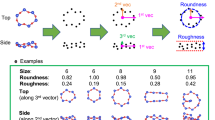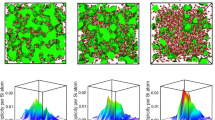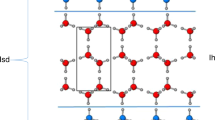Abstract
IN a previous communication1 it was pointed out that the ditrigonal surface symmetry observed for a number of layer lattice silicates probably plays an important part in determining polymorphism among the micas. This idea has now been extended considerably by theoretical and experimental studies to be reported elsewhere. It appears to me that the ideal layer lattice structures must have ditrigonal, rather than hexagonal, surface symmetry. That is, the tetrahedral groups apparently can rotate quite readily about axes normal to the sheets to allow the tetrahedral sheets to contract to the dimensions of the octahedral sheets.
This is a preview of subscription content, access via your institution
Access options
Subscribe to this journal
Receive 51 print issues and online access
$199.00 per year
only $3.90 per issue
Buy this article
- Purchase on Springer Link
- Instant access to full article PDF
Prices may be subject to local taxes which are calculated during checkout
Similar content being viewed by others
References
Radoslovich, E. W., Nature, 183, 253 (1959).
Brindley, G. W., and MacEwan, D. M. C., Ceramics Symp., Brit. Cer. Soc., 15 (1953).
Radoslovich, E. W., Acta Cryst., 13, 919 (1960).
Author information
Authors and Affiliations
Rights and permissions
About this article
Cite this article
RADOSLOVICH, E. Surface Symmetry and Cell Dimensions of Layer Lattice Silicates. Nature 191, 67–68 (1961). https://doi.org/10.1038/191067a0
Issue Date:
DOI: https://doi.org/10.1038/191067a0
This article is cited by
-
Potassium coordination in trioctahedral micas investigated by K-edge XANES spectroscopy
Mineralogy and Petrology (2005)
-
The crystal structure of 2O brittle mica: Anandite
TMPM Tschermaks Mineralogische und Petrographische Mitteilungen (1972)
-
Crystal data on 1M and 2M2 lepidolites
Contributions to Mineralogy and Petrology (1969)
-
The A and B mica layers and the crystal structure of sheet silicates
Contributions to Mineralogy and Petrology (1969)
-
Cell Dimensions and Interatomic Forces in Layer Lattice Silicates
Nature (1962)
Comments
By submitting a comment you agree to abide by our Terms and Community Guidelines. If you find something abusive or that does not comply with our terms or guidelines please flag it as inappropriate.



